The previous post was a review of the FD3 Triathlon Series as if it was a product. Below you will find a more detailed account of my personal experiences during the race. Let me know in the...
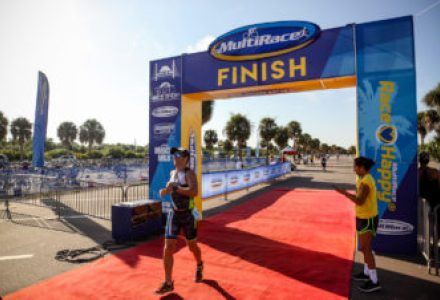

The previous post was a review of the FD3 Triathlon Series as if it was a product. Below you will find a more detailed account of my personal experiences during the race. Let me know in the...

FD3 FLORIDA TRIATHLON INTRODUCTION The event company Multirace, holds numerous running and Florida triathlon events, and recently has planned an event in Habana, Cuba. The Multirace...
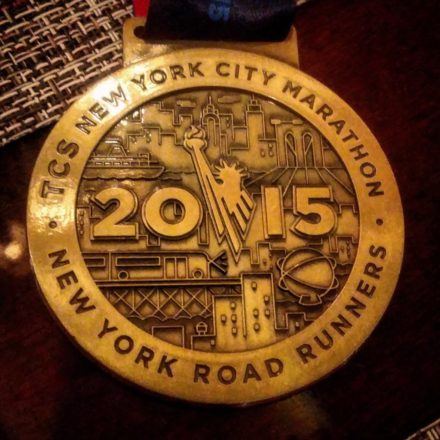
If you didn’t have an opportunity to read the epic writing in the previous post, I discussed the reason “why” I ran the NYC Marathon, then I highly recommend that you do. Not just because the...

My Why - PKD The human brain is an advanced computer that controls many different systems. The body is like a room full of servers each independently managing a different system with one major...
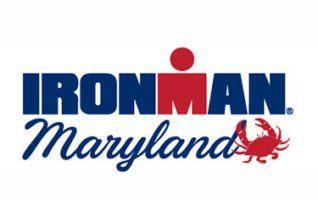
IRONMAN Maryland Part 1 I signed up for Ironman Maryland initially due to the reviews that said it was fast, and beautiful. Jaime started it with all the hype about it being a fast flat bike course...
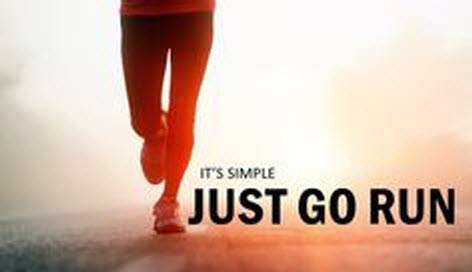
Happy Hump Day! Workout Wednesday’s will consist of favorite workout of mine that I either have prescribed to my clients or have been assigned by MY Coach. It might also be a favorite of yours. ...

I personally have been involved with charities that specifically relate to Cancer for over a decade now. With that in mind and the fact the my friend Ben Mena has taken on a challenge with the The Little Things for Cancer and created a team to run the Marine Corps Marathon, I thought this would be an appropriate time to incorporate a guest post by my friend David Haas. His bio is at the bottom of the post, but he is very active in creating awareness and outreach for Mesothelioma. Enjoy this great article and pass it on to anyone you know that cane be of benefit. Carpe Viam!
Nutrition plays an important role in helping to prevent many types of cancers, but it also plays a major role for those going through cancer treatments and therapies. Eating the right foods can help you maintain your energy levels, gain needed strength to go through treatment and improve your quality of life. However, vicious side effects such as nausea, loss of appetite and extreme fatigue can seriously affect your ability to eat.
Learning how to side step these problems and improve your nutrition can make cancer treatments easier to handle.
Nausea
Common cancer therapies such as surgery, radiation or chemotherapy often result in nausea. Since weight loss can lower immune system function, sap your strength, and lower your vitality, it’s particularly important to learn how to improve your nutritional condition when nauseated.
Start by eating smaller meals more frequently throughout the day. Sipping carbonated beverages, using foods or drinks that contain ginger; sipping clear soups and avoiding spicy foods can also help. It’s also important to stay hydrated, so focus on foods that contain plenty of liquids such as puddings, custards and creamy soups.
Loss of Appetite
The stress and emotional upheaval that comes with a cancer diagnosis can seriously affect your desire to eat. Uncertainty, fear of the unknown and strained family relationships only adds to the burden. Even if you don’t feel hungry, it’s important to eat a balanced diet that’s high in protein, fruits and vegetables. The University of Arizona Cancer Center suggests you take advantage of the time of day when your appetite is best.
Focusing on higher calorie foods for both meals and snacks will help because you won’t need to eat as much volume. Try adding fortified protein powders to milkshakes, snack on cheese and nuts, and add sauces or extra fats to your vegetables. Making sure you exercise everyday can also help to increase your appetite.
Fatigue
When you’re tied and worn out due to anxiety, medication, or treatment, poor nutritional practices only makes the depression or dragged out feeling worse. Getting plenty of liquids, exercise, and nutrient-dense foods in the form of colorful fruits and vegetables are important to keep the fatigue from getting you down.
While some causes of fatigue from cancers can’t be avoided, like the symptoms of mesothelioma, make sure you’re eating plenty of iron-rich whole-grain cereals, getting adequate sleep and eating enough protein foods such as eggs, beans and dairy. While paying attention to nutritional details can feel like it’s more trouble than it’s worth, keeping your nutritional intake high during cancer treatments can give you that extra edge you need to survive.
David Haas
Joining the MCA in 2011, David Haas is the Director of Awareness Programs. In addition to researching much of the information available to our site’s visitors, David often blogs about programs available and campaigns underway at the Mesothelioma Cancer Alliance. David is a fitness enthusiast who frequently runs, climbs, and bikes for enjoyment. He is also very involved in outreach associated with awareness about the dangers of asbestos for many different organizations and groups of people.
to researching much of the information available to our site’s visitors, David often blogs about programs available and campaigns underway at the Mesothelioma Cancer Alliance. David is a fitness enthusiast who frequently runs, climbs, and bikes for enjoyment. He is also very involved in outreach associated with awareness about the dangers of asbestos for many different organizations and groups of people.
Read more: http://www.mesothelioma.

One of the scariest things for a beginning triathlete, besides getting in the open water, is cycling. The first image that wandered into my head upon deciding to start seriously bicycling was of a that scary peloton. Those tight formations of bikes moving at ridiculous speeds, during the Tour de France, so close together that one wrong move could cause serious damage to my body or someone else. Scary right? Luckily, triathlon doesn’t allow for huge groups like that, as a matter of fact it isn’t even allowed. Whew!
Buying my first Bike
I didn’t have a lot of money when I first started in triathlon, and I also didn’t really know if I was going to like it. I spent a lot of time in bike stores drooling over the expensive bikes, while studying cheaper entry level bikes. Every bike store had a different angle they played. One would say, purchase the more expensive bike, gain more speed so when I improved I didn’t have to buy another bike. Another would tell me to buy the entry level but load it up with expensive components so I could ride faster, and when I wanted another bike, the components alone would warrant a good price, and of course that store would buy it back from me and give me a discount an another bike. Decisions, decisions what to do, what to do?
I researched different road and tri bikes online and in magazines, and while I was pretty sure I would enjoy triathlon, I decided on an entry level Canondale CAAD 9 road bike. I also included in my purchase, a pair of pedals, cleats, shoes and a helmet. The helmet was very important especially since I hadn’t actually rode a bike in over 10 years. Would I really not forget how to ride a bike? The answer to that my friends is YES. It is not a skill that is forgotten. It maybe a little unsteady the first couple of times, but not forgotten. Luckily I will have my trusty helmet, just in case.
I would enjoy triathlon, I decided on an entry level Canondale CAAD 9 road bike. I also included in my purchase, a pair of pedals, cleats, shoes and a helmet. The helmet was very important especially since I hadn’t actually rode a bike in over 10 years. Would I really not forget how to ride a bike? The answer to that my friends is YES. It is not a skill that is forgotten. It maybe a little unsteady the first couple of times, but not forgotten. Luckily I will have my trusty helmet, just in case.
I also read something that resonated with me. The most important thing that is needed after the purchase of a bike, is the fitting. At first I thought, “what? Don’t I just have to find the most comfortable height of the seat and then get going?” I had no idea that there are so many different adjustments on a bike, to a point that bike “fitters” actually have to be certified in order to properly fit you. They have to take courses, pass tests and be mentored. “Really?”, you ask? Yes…really.
The fitting took about an hour where they put my bike on a trainer, and with my shoes and bike shorts I pedaled, then the fitter took measurements and made adjustments to my seat post raising it and lowering it to a perfect dimension. Then he took angle measurements from the ground to my hip, knee and shoulder and from the pedal and a bunch of other places. He moved my saddle not only up and down by forward and back. He then took my handle bars and put different size spacers on the tube underneath my handlebars to find the perfect height and then was able to move them back and forth to find the right angle, height and most comfortable spot for me. I had no clue there was this much to it.
Pre-First Ride
As I left the store after my fitting, Jo-el, the general manager and friend from my track club, gave me some good advice. I had never rode in cleats and pedals before, where my feet were clipped into the pedals where they wouldn’t just simply lift up. I had to turn my heel so the cleat would unclip from the pedals so I could put my foot down. Jo-el said to take my bike in the house and put it between a doorway, and practice clipping and un-clipping from the pedals. Also, I needed to find the most comfortable side to unclip first and then stick to that side no matter what. I followed that advice in detail. I clipped, unclipped, clipped and unclipped till I was sure I had mastered it. Then I took a little ride around the block and practiced even more till I was confident I mastered at least that part.
I had a feeling of euphoria that first little trip in my neighborhood. I felt fast, free traveling under my own power on this brand new, tuned Cannondale bike. I was really excited for my first ride the next day in the hills of San Antonio.
The First Ride
I drove to San Antonio…Florida that is, with my brand new bike in the back, my new bike shorts on, bottles ready to put in their cages on the bike, coffee in my cup holder and classic rock playing on the radio. I remember having mixed feelings about this initial ride. I had never ridden in a group before, I had never ridden with these cleats and clips before, but I knew I was in good shape but was I fit enough? After that I just thought to myself, “if you cannot go as far then just turn around and head back. no big deal.”.
I met a friend at these ball fields and was mesmerized by the amount of bikers getting ready to take their morning ride. The sea of colors from the different bikes and jerseys was extremely overwhelming. That anxious feeling came back for a second until my friend mentioned we were riding with triathletes not pure cyclists. They would understand I was on my first ride and would help me out. After preparing for my first journey, we found our formation and began the trek.
I was surprised that I was staying in the middle of the pack and with minimal effort. The wind was in my face, I was pedaling under my own power and keeping up! It was an incredibly euphoric feeling. Unfortunately, when we hit the first long hill, euphoria turned to anxiety and then… embarrassment.
My pedaling slowed, and it became extremely hard to mash down on the pedals. With very minimal spinning of my legs I tried to switch to higher gear, but I actually ended up in a lower gear which made it even harder. When I did finally gear up, it was too late. I couldn’t move the pedals fast enough to switch gears, and my chain fell off , so I was at a dead stop. Of course I was so concerned about the gears I didn’t unclip out of my pedals, and I went down on my side. The only thing that really hurt was my ego as I stood my bike up and examined the chain. The group was passing me all asking if I was ok, and taking for granted that I was telling them I was fine and to keep going. By the time I had my chain back on the group was completely out of site. I pedaled like a bat out of hell hoping to catch up, but I missed a turn and ended up 10 miles out of my way, and lost.
To make a long story short ( I know, too late) one of the faster members of the group realized I was gone, backtracked, and finally found me asking directions at a convenience store. He led me back to the group and I finished the ride without any other issues, but I learned a lot of lessons that day.
Hints to get started in cycling straight from the Goof:
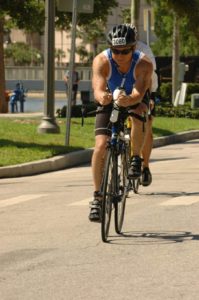
On my first bike after a couple of modifications
1. Buy an entry level road bike. This is usually an aluminum alloy frame. You don’t want a Wal-mart special, but you don’t need to start with the top of the line bike either.
2. Purchase a set of entry level pedals, cleats and shoes. The pedals usually come with the cleats and the bike shop will install them for you.
3. Purchase safety equipment. Biking shorts, and a helmet to start. I would also have a set of sunglasses as well. Not just to keep the sun out of your eyes, but it helps with the wind too. Make sure you also have at least one water bottle with a cage installed on your bike.
4. Get the bike fit for you. Have a certified bike fitter make those adjustments specifically for you.
5. Practice getting in and out of your cleats . Put your bike in a doorway, hold onto the frame and get in and get out of your cleats. Find the most comfortable side of the bike and then practice getting out of the cleats and putting your foot on the ground.
6. Take a short ride around your neighborhood and continue to practice getting in and out of your cleats. When seeing a stop or even a potential stop ahead practice just moving your heel just to the point where you unclip before stopping so you have a quick option that you can pull out of your clip to stop or return your heel to clip back in to keep going. Remember to always clip out and stand with the same foot first every time.
7. Understand your gears. While in that first ride, switch the gears on your right hand and find what lever takes you to a higher or easier gear, and which one brings you to a lower or harder gear.
8. Take your first long ride with friends and have some fun.
One last thing, you are going to fall. That is just the reality of it. You will get stuck in your cleats at some point and you will fall over, but it will be minimal. The trick is to accept it, get up brush yourself off, laugh at yourself, get back on your bike and have fun. It’s worth it I promise.
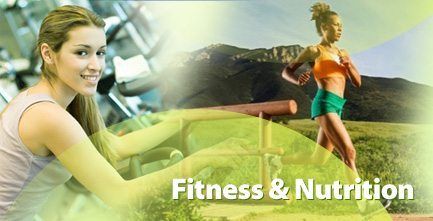
~This is a guest post by a friend of mine, Dr. Karen Danish, LAP ~Enjoy!~
It’s difficult to talk about nutrition without fitness, and fitness without nutrition. They go hand-in-hand, and help balance each other out, creating a healthy body and mind. Proper nutrition fuels the muscles to help us power through not only tough workouts but our day-to-day activities. Nutrition, by definition, is a process the body uses to digest food and use it for energy, growth and development. Fitness describes our body’s ability to process energy in the most efficient way possible. It covers a wide range of topics including endurance, body composition, strength and flexibility. Without proper nutrition, our bodies have the inability to work on fitness levels. See? You just can’t talk about one without the other. Here, we’ll talk a little bit more about how nutrition helps your fitness, how a lack of nutrition hurts it, and why exercise alone isn’t enough.
Have you ever heard, “You are what you eat?” It’s true, especially when discussing nutrition and fitness. And it’s pretty simple. Eating bad food makes you feel bad, and eating lots of good food makes you feel really good. Foods that are packed with vitamins, nutrients and are more natural are better for you and your body. Higher calorie, processed foods take a toll on your body and daily routine. Foods higher in nutrients give you energy, keep you focused on work or chores, and a healthy diet can promote good health habits in all areas of your life. When you eat right, your body works more efficiently, giving you the energy to exercise and keep up your fitness routine.
You know that good foods make you feel and look good, so why do bad foods hurt your fitness? Things on the outside might look ok with a poor diet, but on the inside, blood sugar levels are adversely affected, cholesterol levels can skyrocket, major damage can be done to the heart, and your digestive tract will not work as efficiently. Your motivation to keep up a healthy exercise routine will take a hit as well. You won’t have enough energy to make it a priority. It’s just a fact: you cannot out-exercise a bad diet.
Many people think that even if we don’t maintain a perfect – or even great – diet, we can hit the gym and still maintain a healthy body. This is not only wrong, but dangerous. If you load up on unhealthy, sugar-laden foods then head to the gym for an intense workout, it spells trouble. Eating foods that are packed with nutrients are better for powering a workout and helping you sustain your fitness level. The wrong kind of fuel will cause an inevitable breakdown at some point. Your body needs and deserves the right kind of energy, which is important to an active lifestyle.
It’s simple: nutrition and fitness go together. Always. Your body needs a healthy diet in order for it to what you want it to do efficiently. Consult a doctor or dietitian with specific questions about what you should be taking in to support your fitness routine.

This post was written for IronGoof, by Karen Danish, LAP. Karen is a licensed acupuncture physician and a valued staff member at Anne Hermann MD, PA, St. Petersburg Weight Loss Clinic.

As stated in web-ease “O-M-G!” I have so much information to share It is hard to think about anything else. Unfortunately, I started on a new contract a couple of months ago and now that I am fully immersed in it, my days are becoming hectic. Not only that but I have my own training, coaching clients and getting ready for the CPT test this month, so needless to say hectic is the only word to describe my activities right now.
Have you noticed the new change to IronGoof.com? I have moved away from a complete blog site to a more of a Coaching Site. I hope you like the new looks. Please feel free to explore and send some feedback on the changes. It will continue to be a work in progress, so any and all honest comments on the site are very welcome and encouraged.
Coming up over the next weekend or so I am going to be sharing news about past events and the latest going’s on.
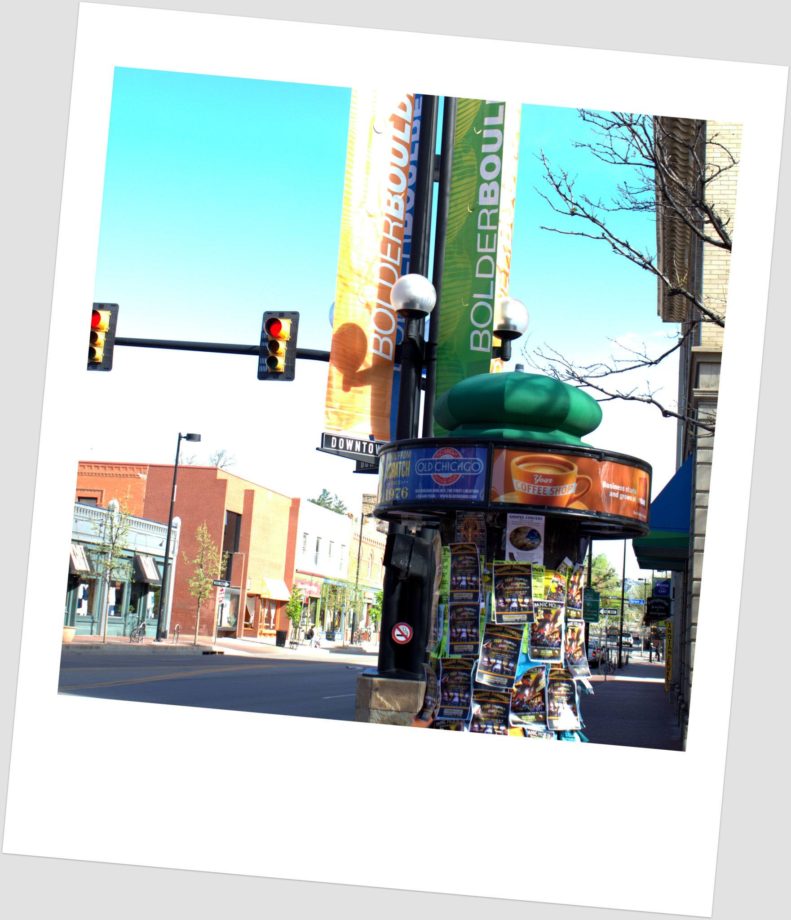 I just returned back from Boulder, Colorado where I spent five amazing days working some of the top running coaches on form and performance. The Newton Running Lab hosted certification training for RRCA, Newton and Lydiard. The content included proper running form with drills, strength exercises, injury prevention, injury management and transition plans. While I was intrigued with the Newton Coaching formula, I was excited that a portion of it mimicked my own. The only part that my personal coaching methodology added was the intricacies of making the running form personal to each person. Newton believes proper running mechanics are the same for everyone, and with the hundreds of hours I spent learning my own body I know this isn’t true, but it is a good place to start.
I just returned back from Boulder, Colorado where I spent five amazing days working some of the top running coaches on form and performance. The Newton Running Lab hosted certification training for RRCA, Newton and Lydiard. The content included proper running form with drills, strength exercises, injury prevention, injury management and transition plans. While I was intrigued with the Newton Coaching formula, I was excited that a portion of it mimicked my own. The only part that my personal coaching methodology added was the intricacies of making the running form personal to each person. Newton believes proper running mechanics are the same for everyone, and with the hundreds of hours I spent learning my own body I know this isn’t true, but it is a good place to start.
The Lydiard Certification training was the best part. Arthur Lydiard was a New Zealand running coach that coached many Olympians to medals including gold in the 1500 meters and beyond. He later mentored other coaches to a point where he is actually considered “The Coach of Coaches of Champions.” Obviously, this resonated with me because Arthur himself was not a competitor, but he coached more champion runners than any other coach to this day. As I really do not compete with anyone other than myself for PRs, this validated my feelings on coaching and my passion for it. As this is a coaching method, not a form method, it also validated a lot of what I already incorporate, but I also enhanced my knowledge greatly.
It was taught by Lorraine Moller who herself was a three time Olympian to include racing in the first 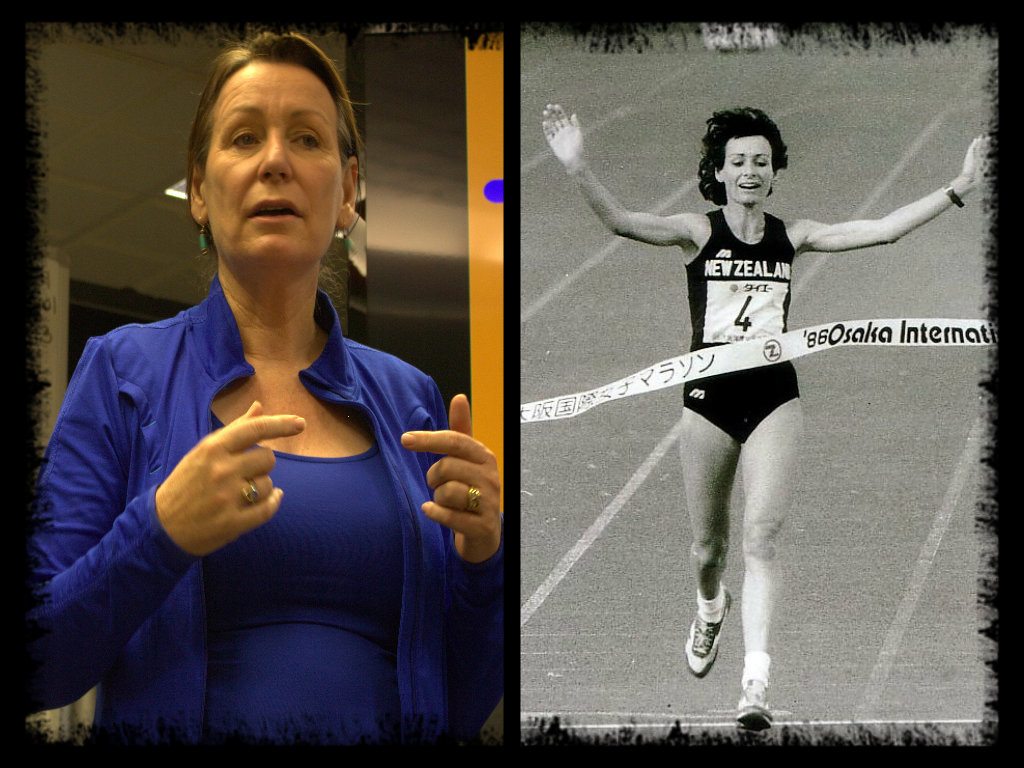 ever Olympic Women’s Marathon in 1984 where she took 5th. She did won bronze in 1992 at the Barcelona games in the Women’s Marathon. Her credits also include winning Grandma’s Marathon three times, the Boston Marathon, the Osaka Ladies Marathon twice, the Hokkaido Marathon twice, and second in the Commonwealth Games. She was coached by John Davies who was mentored by Arthur Lydiard. Lorraine herself was followed by Arthur and would consistently give her pep talks before competition. She is an amazing speaker and completely passionate about running and the Lydiard Coaching method as well as the founder and president of the Lydiard Foundation. I was extremely lucky to have someone as accomplished as she is as an instructor for the class.
ever Olympic Women’s Marathon in 1984 where she took 5th. She did won bronze in 1992 at the Barcelona games in the Women’s Marathon. Her credits also include winning Grandma’s Marathon three times, the Boston Marathon, the Osaka Ladies Marathon twice, the Hokkaido Marathon twice, and second in the Commonwealth Games. She was coached by John Davies who was mentored by Arthur Lydiard. Lorraine herself was followed by Arthur and would consistently give her pep talks before competition. She is an amazing speaker and completely passionate about running and the Lydiard Coaching method as well as the founder and president of the Lydiard Foundation. I was extremely lucky to have someone as accomplished as she is as an instructor for the class.
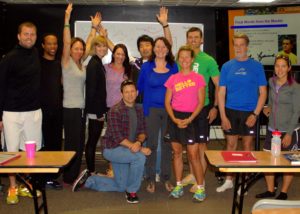
The class was kept fairly small in order to provide us with a lot of individual instruction. We went through analysis of our own form using video which was really interesting. I know that my form isn’t perfect, but my mechanics are good. I found that I actually do not lift my knees as much as I should, and when I applied it later the form became even easier. I learned a lot and I hope to attend the level 3 class later in the year.
Boulder as a city was awesome!!! The scenery was amazing as it was surrounded by mountains and the culture really resonated with me. Boulder’s environment seems to revolve around two things, athletics and the arts. Which are my two passions, so this city really got under my skin. Everywhere you go, everyone is traveling on bicycles and avid cyclists and triathletes are training. Pearl Street is filled with small businesses, to include, coffee shops, restaurants and bars, and none of them are chains. You cannot find a McDonald’s or Wal-Mart anywhere the residents won’t allow it which is great. The quad-like feeling of this outdoor “mall” for lack of a better term, is filled with musicians playing and practicing, photographers, writers, and artists. It gives the feel of a old small town but with the University of Colorado in the midst, it also brings in a younger element that increases the energy of the area. The weather started the day in the high 50s and increased to the mid 80s and then ended in the high 60s. There is almost no humidity, so the air smells fresh and clean. Since most people utilize people-powered transportation it feels as though exhaust fumes do not even exist. I just fell in-love with Boulder and Colorado. I am not quite sure I ever want to live in a place with winter months, but if I did, I definitely would consider Colorado and Boulder.
My plan is to sit and complete the few posts I have started this weekend to bring you the following:
That should keep me busy for a while. Have an amazing week! Live with Passion.
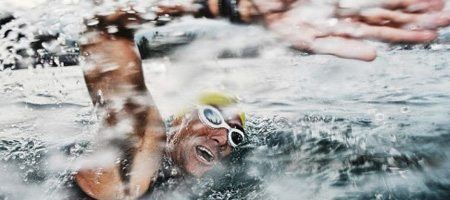
In my recent post, Effortless Swimming-Goof Out#1, I gave a summary of the introductory lesson in Effortless Swimming’s Mastering Freestyle Course. This course is located within the Swimprove program hosted by Brenton Ford and his Australian company Effortless Swimming. I continued with that lesson for a week which was dedicated to balance and streamlining within the water, and I recently continued with lessons 1 & 2.
Lesson 1 was specifically geared to the feel of rotating from your hips. I did this workout 3 times and I want to nickname it the Core Killer. I never thought working out in the pool with so little movement would cause such a tightness in my abs and core, but nevertheless, my abs, obliques, quads and hammies where a little tight the next day. It consisted of 1800 meters of drills, plus a warm-up and cool down making it 2400 meters total.
The Workout
WU: 300m any stroke
MS: 300m Kick on side w/ shoulder to chin
300m Kick on side w/ hand-to-face
300m Kick on side w/ switch
300m Kick on side w/ arms at side
300m Kick on side w/ arms across chest
300m Kick on side w/ blockhead arms
CD:300m Easy Free
I do not have a strong kick, so I continued to use my Zoomer fins to reduce my worry of propulsion since I knew that was not the focus of the workout. Lucky for me, Brenton actually suggests the use of fins in both the written material and the videos that accompany this course.
Throughout the workout, I noticed that when it was more difficult to rotate from my hips, I was not streamlined, however when I engaged just my core, and lengthened myself, rotating the hips became a lot smoother and I did move faster to the other end of the pool. I also learned more about breathing, because when you have one shoulder out of the water and you are look at the bottom of the pool, once in a while it is nice to turn your head and breathe. The breath is quick, so I started to breathe out during the drill and breathe in when I rotated. This was never natural for me and I know it caused a lot of anxiety for me. It still isn’t natural, but it makes a lot more sense. Once I finish the lessons, I will be able to develop a relaxing pattern with this new revelation.
Lesson 2 added the arms. I kept the fins with these drills, but because there were only three drills, I dropped them afterwards and swam one thousand meters without them. I was still slow, but I noticed it was quite a bit easier. I also developed a patter of breathing for myself, which I still am not consistent with but, when my position is streamlined and I am keeping a high elbow, it is a lot easier with the new breathing patter. It makes for an interesting alert. If I begin to feel like my breathing pattern is off, most likely it is because my swimming technique as fallen apart.
The Workout
WU: 300m any stroke
MS: 300m Shark Fin Drill with pause & return
300m Shark Fin Drill with practice entry
300m Shark Fin Drill with switch
10×100 Free Form Focus
CD: 300m Easy Free
This weekend will be the test. My first triathlon of the season is Sunday at the HITS Ocala Olympic Triathlon. I still have one more module of the Mastering Freestyle Course, but that will have to wait for next week. I am going to use my last workout this week to continue with the lesson 2 drills. We will see what happens. I am really excited
You can checkout the Swimprove program at www.swimprove.com